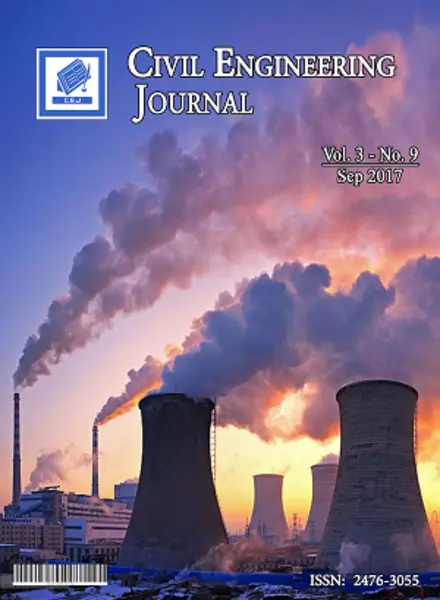-
status and challenges of medical waste management in hospitals of iran
جزئیات بیشتر مقاله- تاریخ ارائه: 1400/08/01
- تاریخ انتشار در تی پی بین: 1400/08/01
- تعداد بازدید: 442
- تعداد پرسش و پاسخ ها: 0
- شماره تماس ژورنال: 982188779475ext.258
medical waste is of great importance due to its hazardous nature that can cause undesirable effects on humans and the environment. this study focuses on medical waste management in hospitals of iran. data were collected based on questionnaires and for self-report of medical waste management. the results along with other information were sent to the ministry of health network system. results indicated that the mean generation rate of non-hazardous and sharp and infectious and total wastes in iran were, respectively, 1.84, 1.09 (36.9% of total waste generated) and 2.98 kg/bed/day. chemical waste generation rate in iran is 0.02 kg/bed/day (0.68%) that relative to infectious waste and total waste generation rate is much lower which could be due to improper segregation of medical wastes. there is significant differences between private and governmental hospitals, in terms of infectious and sharp waste generation rates (p=0.027). also there are significant differences between specialized and general hospitals in group of non-hazardous waste (p=0.039), infectious waste (p=0.001) and total waste generation rate (p=0.02). 65.41% of governmental hospitals used autoclave for infectious waste treatment. in the private and governmental hospitals 14.8% and 24.29%, respectively not have any treatment devices and hazardous waste was disposed without treatment.
حوزه های تحت پوشش ژورنال
مقالات جدیدترین رویدادها
-
استفاده از تحلیل اهمیت-عملکرد در ارائه الگوی مدیریت خلاقیت سازمانی و ارائه راهکار جهت بهبود
-
بررسی تاثیر ارزش وجوه نقد مازاد بر ساختار سرمایه شرکت های پذیرفته شده در بورس اوراق بهادار تهران
-
بررسی تأثیر سطح افشای ریسک بر قرارداد بدهی شرکت های پذیرفته شده در بورس اوراق بهادار تهران
-
بررسی تأثیر رتبه بندی اعتباری مبتنی بر مدل امتیاز بازار نوظهور بر نقد شوندگی سهام با تأکید بر خصوصی سازی شرکت ها
-
تأثیر آمیخته بازاریابی پوشاک ایرانی بر تصویر ذهنی مشتری پوشاک ایرانی (هاکوپیان)
-
بررسی تغییرات الکتروکوکلئوگرافی و پاسخهای شنیداری ساقه مغز در 100 بیمار مبتلا به منیر در بیمارستان رسول اکرم (ص) 1379-1377
-
تأثیر هوش هیجانی، ویژگی های شخصیتی و روابط بر تمایل به تغییر رفتار مصرف کننده در صنعت ورزش
-
واکاوی وضعیت آموزش مهارت های اساسی زندگی در پایه ششم ابتدایی از دیدگاه معلمان و متخصصان
-
بازشناسی راهکارهای طراحی مطابق با الگوهای پایداری محیطی در معماری بافت قدیم بوشهر
-
بررسی آزمایشگاهی رفتار شمع پافیلی تحت بارهای کششی مایل در خاک ماسه ای
مقالات جدیدترین ژورنال ها
-
مدیریت و بررسی افسردگی دانش آموزان دختر مقطع متوسطه دوم در دروان کرونا در شهرستان دزفول
-
مدیریت و بررسی خرد سیاسی در اندیشه ی فردوسی در ادب ایران
-
واکاوی و مدیریت توصیفی قلمدان(جاکلیدی)ضریح در موزه آستان قدس رضوی
-
بررسی تاثیر خلاقیت، دانش و انگیزه کارکنان بر پیشنهادات نوآورانه کارکنان ( مورد مطالعه: هتل های 3 و 4 ستاره استان کرمان)
-
بررسی تاثیر کیفیت سیستم های اطلاعاتی بر تصمیم گیری موفق در شرکتهای تولیدی استان اصفهان (مورد مطالعه: مدیران شرکتهای تولیدی استان اصفهان)
-
پیش بینی انسجام و کارکردهای خانوادگی در زوج ها، براساس عمل به باورهای دین
-
جرم شناسی اطفال و ارزیابی شخصیت اطفال بزهکار
-
تجلی مضامین دینی در نقوش انسانی ظروف سفالین دوره سلجوقی
-
determination of organochlorine and organophosphorous pesticide residues in irrigated water from gubi, waya dams and gudum fulani irrigation sites in bauchi lga, bauchi state,nigeria using composite sampling
-
investigation into the effect of bed stiffness on seismic performance of concrete gravity dam under far- and near- field earthquakes


سوال خود را در مورد این مقاله مطرح نمایید :